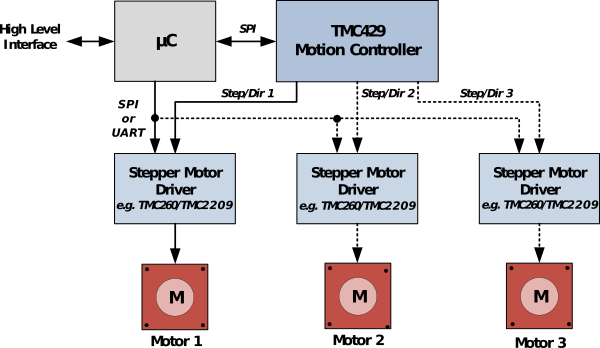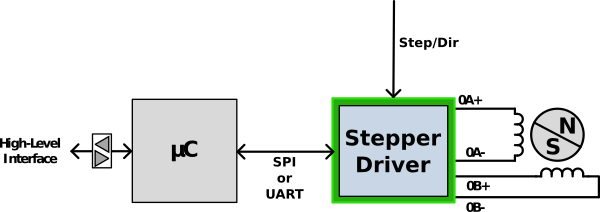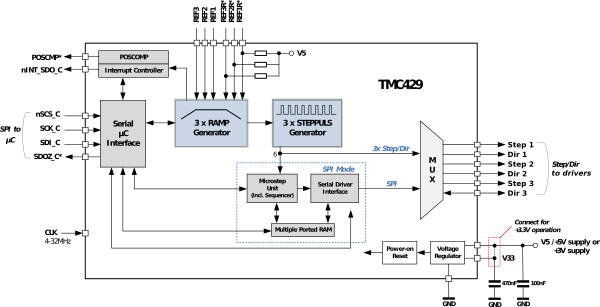- Name
- TMC429
- Version
- 2.3.1
- License
- BSD
- URL
- https://github.com/janelia-arduino/TMC429
- Author
- Peter Polidoro
- peter@polidoro.io
The Trinamic TMC429 is a triple-axis dedicated step and direction motion controller for both position and velocity control with acceleration and deceleration trapezoidal ramps.
From Wikipedia, the free encyclopedia:
A stepper motor, also known as step motor or stepping motor, is a brushless DC electric motor that divides a full rotation into a number of equal steps. The motor’s position can be commanded to move and hold at one of these steps without any position sensor for feedback (an open-loop controller), as long as the motor is correctly sized to the application in respect to torque and speed.
Stepper motors need both a controller and a driver. These may be combined into a single component or separated into multiple components that communicate with each other, as is the case with the TMC429 stepper motor controller. One controller may be connected to more than one driver for coordinated multi-axis motion control.
A stepper motor controller is responsible for the commanding either the motor kinetics, the torque, or the motor kinematics, the position, speed, and acceleration of one or more stepper motors.
A stepper motor driver is responsible for commanding the electrical current through the motor coils as it changes with time to meet the requirements of the stepper motor controller.
- Power supply (3.3V or 5V)
- Clock (4-32MHz)
- SPI to microcontroller (MOSI, MISO, SCK, CS)
- Step and Direction signals to each of the stepper drivers
- INT and POSCOMP signals to microcontroller
- Reference signals (left and/or right) from limit switches attached to each stepper motor



